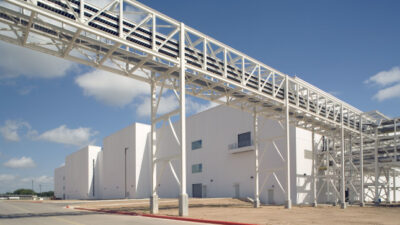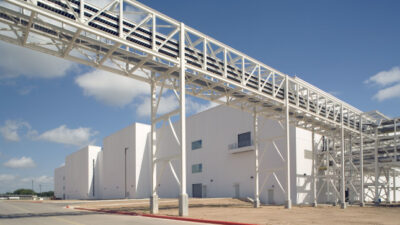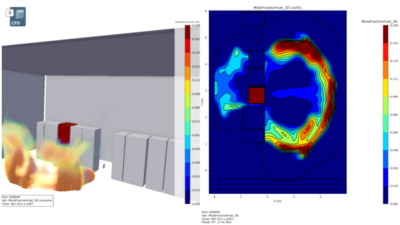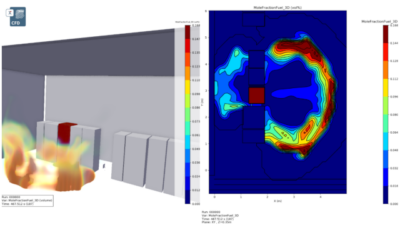There’s a tremendous admiration and respect for the way things used to be at the CrawfordAuto-AviationMuseum and its adjacent history museum and archival library in Ohio. Home to nearly 200 antique, vintage and classic cars and aircraft ranging from the first enclosed automobile to the first winner of the Cleveland 500, the Crawford collection is one of the top ten in the nation according to Car Collector magazine.
Until recently, however, the museums shared a fire-safety system that was also an artifact. Forty years old, the antiquated system’s principal drawback was that it treated the different museums that comprise the complete historical facility as entirely separate entities.
Mark Corcoran, chief of protection services for the Western Reserve Historical Society, the organization that runs the museum, explains the practical and potentially dangerous problem which could result from such a limited system.
“Because we had added on fire alarms subsequent to the initial installation, the various alarms did not link together,” he says. “So if, for example, a fire alarm activated in the library, it did not annunciate in the rest of building. Our employees and visitors did not have any clue what was going on over at the library. So an important part of our system upgrade project was putting in a network of alarms that would tie together and provide protection throughout the facility.”
As respectful of antiques as they are at this museum, upgrading the old system was not an option. Comprised of outdated technology, there were no longer parts compatible with the old equipment. Corcoran knew that he had to completely remove the old system and take this history museum’s safety technology into the 21st century.
He looked at three or four different options and finally settled on one. There are a number of things that attracted him to the specified system:
“One of the panels is located in the basement of the Crawford Auto-Aviation museum, covering that section itself,” explained Corcoran. “There’s another panel in the basement of the Bingham-Hanna house that covers those alarms. And there’s a panel in a closet on the first floor of the Hay-McKinney house which monitors the Hay house and the central edition alarms. And they’re all able to talk to each other—when one panel is activated it sets off the other panels.”
The museum’s panel features a digital alarm communicator transmitter 14.4-k Baud modem, an option that provides remote site upload/download and remote monitoring capabilities. This allows life safety system managers like Corcoran to upload vital programming information directly to the control panel and download this information to a local PC. Also, technicians can diagnose problems remotely, saving a great deal of time and money.
“I’ve put in a number of systems over the years,” says Corcoran. “When you’re putting in unfamiliar equipment you’re often sitting on edge hoping that everything’s going to work easily and the way it’s supposed to. The learning curve for this project was a lot shorter than I had anticipated. Once we took it on, there were a couple of ground faults that had to be fixed, but then it was up and running, and it’s been running very well.”
Recently the system was called into action. A transformer in the museum’s library overheated and started smoking. Luckily the smoke triggered an alarm in the library basement, which was heard throughout the facility, just as Corcoran had hoped. The museum was evacuated until the problem was pinpointed and addressed.
“As it turned out,” said Corcoran, “It was just a minor problem. But it could have been a lot worse. We were fortunate to have upgraded to an advanced system that really did the job.”
For more about MS-9600 control panel from Fire-Lite, click here .



